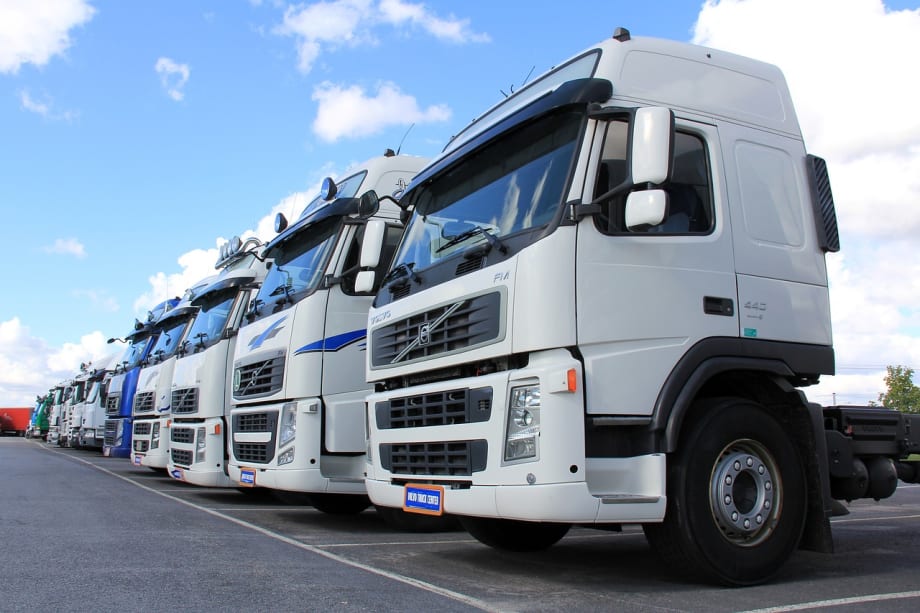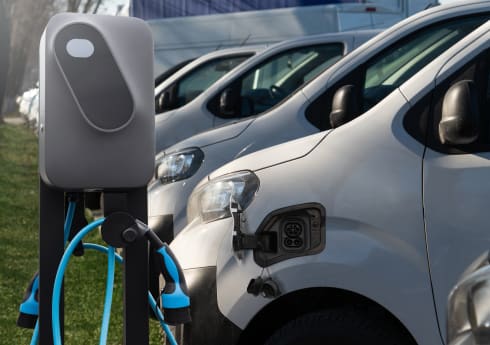What Do Tachograph Symbols Mean?
Tachograph symbols are used to record the status of drivers. They explain when they’re driving, resting and carrying out other work tasks.
Continue reading to find out what different tachograph symbols mean, or click below to find the right system for the right price and see how fleet telematics can help with monitoring driver hours, fuel efficiency and more.
Knowing the meaning of the different tacho symbols is a vital part of a fleet manager’s job. The purpose of tachos is to ensure that drivers don’t exceed their regulated work hours. Understanding the symbols and using tachograph analysis helps ensure this doesn’t happen.

What is a tachograph?
A tachograph is a device installed to vehicles to record driving speed, distance, and time.
This is to ensure that employers and their employees abide by the laws relating to drivers’ hours, specifically those regarding the rest period and driving times of drivers.
The information is logged automatically and is stored in the unit memory of the vehicle and cards issued to the drivers.
There are two types of tachograph:
- Digital: keeps a digital record of driving statuses
- Analogue: data is recorded on a stylus that cuts into a wax-coated analogue chart
It’s a requirement under EU law to have a tachograph fitted to any professional vehicles that entered service from May 2006.
This makes tachographs an essential part of fleet management.
What are the key symbols on a tachograph?

Credit: NeedPix
Digital tachographs use driving symbols to show the different driver statuses during working hours. This is to make sure that drivers don’t infringe the laws around their drive and rest times.
There are four legally recognised key symbols for tachograph devices.
Drive

This records the time a driver is using a vehicle and the engine is running, including when they’re parked.
Other work

This logs the time when a driver is still working but is doing work other than driving (the engine is off), such as moving goods from a stationary vehicle.
Available

This accounts for the time when the engine of a vehicle isn’t on but the driver must be available to resume driving or take calls. This covers periods like when an international driver is on a ferry that’s in transit between countries.
Rest/break

This covers times when the driver is resting or taking a break, both during work hours and when they’re off shift.
The purpose of these symbols is to make it easier for fleet managers, company owners and drivers to understand the tachographs data.
Telematics can give you a bird’s eye view of your fleet at all times, making it quick and easy to manage all your drivers. You can deal with breakdowns or accidents immediately and even check the driver dashcam footage or speeding incidents from your mobile phone.
As a free comparison site, iCompario can help you find the right system for the right price.
Types of tachograph
There are two types of tachograph: digital and analogue.
All new HGVs sold in the UK from June 2019 must have a digital tachograph fitted. This benefits both enforcement agencies and drivers, as it means vehicles can be assessed for compliance without needing to be stopped and physically checked.
Companies using arctic vehicles must also be aware of tachographs. Arctic vehicles are refrigerated transport lorries. People driving these vehicles are subject to the drivers’ hours rules, meaning their status must be recorded. Tachographs collect this information and help companies using arctic vehicles to meet the compliance requirements around drivers’ hours rules. Some farmers also use tachographs to benefit from the information they collect.
Digital tachographs versus analogue tachographs
A digital tachograph records a driver’s information via a smart ID card. These driver’s cards show important information about the driver, including a photo of them, their date of birth and card expiry date — not unlike their driving licence.
The smart card is authorised before the drivers start their shift. Once they’ve been approved to begin working, the drivers put their cards into the tachographs card slots and the devices then automatically record and store their work statuses.
Drivers must manually enter their details onto an analogue tachograph. They do this by writing their work mode onto a sheet of wax paper. This must then be physically put into the device at the start of their shift.
Due to the HGV legislation introduced in 2019 and the accuracy and simplicity of digital tachographs, analogue tachographs have largely been replaced by digital devices.
This is because the requirement to make manual entries increases the risk of errors significantly, something that could lead to a driver working longer than they should and breaching the drivers’ hours regulations for their drivers.
What responsibilities do fleet managers have?

Credit: PXHere
It’s a legal requirement for tachographs to be fitted in professional vehicles. Fleet managers and owners of transport companies are responsible for ensuring that is the case for their vehicles.
As a result, fleet managers and operators have various responsibilities, which include:
- Downloading and storing information from vehicle units and drivers’ smart cards
- Managing the printouts and records of every driver under their employment
- Reporting discrepancies or cases of non-compliance concerning drivers’ hours
- Training drivers to operate their tachograph devices in accordance with UK law
- Ensuring that every tachograph in their vehicles is kept in proper working order
Finding the right telematics provider
Every professional vehicle must have a tachograph fitted. You must do this to monitor your drivers and failure to do so will mean your company will be in breach of the laws concerning drivers’ hours.
Monitoring your drivers isn’t only a legal requirement for your business, it’s also an important way of reviewing their performance and finding areas for improvement. You can do this with a telematics device.
Telematics devices record a range of data, such as average speed, fuel usage, engine idle times and vehicle location. You can review the information collected by your telematics devices and use it to ensure your drivers are using your vehicles efficiently.
Check out our telematics page to discover more about how these devices can help your business.
Telematics can give you a bird’s eye view of your fleet at all times, making it quick and easy to manage all your drivers. You can deal with breakdowns or accidents immediately and even check the driver dashcam footage or speeding incidents from your mobile phone.
As a free comparison site, iCompario can help you find the right system for the right price.



